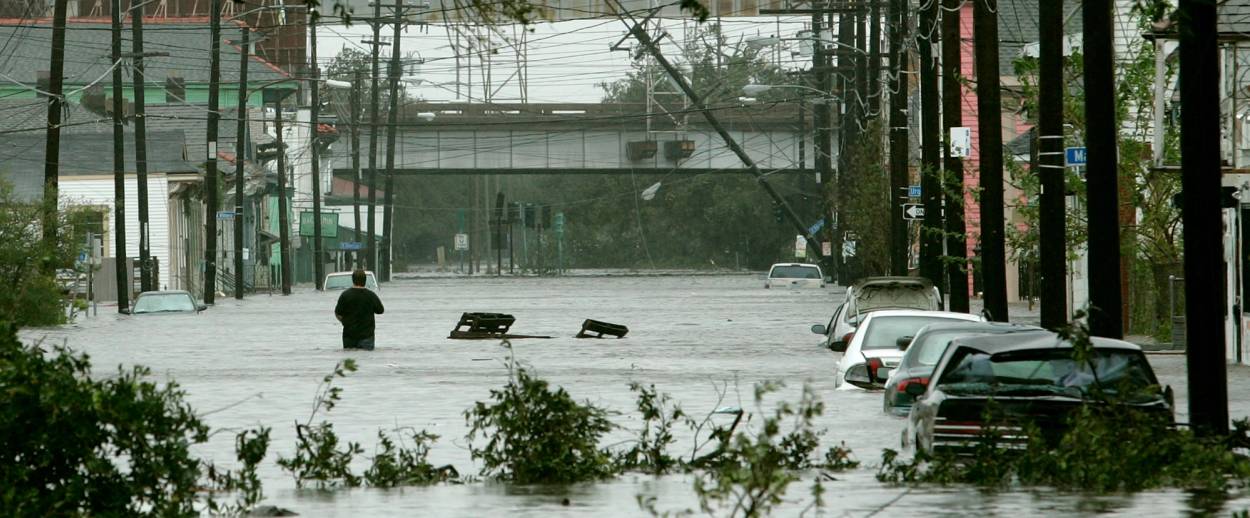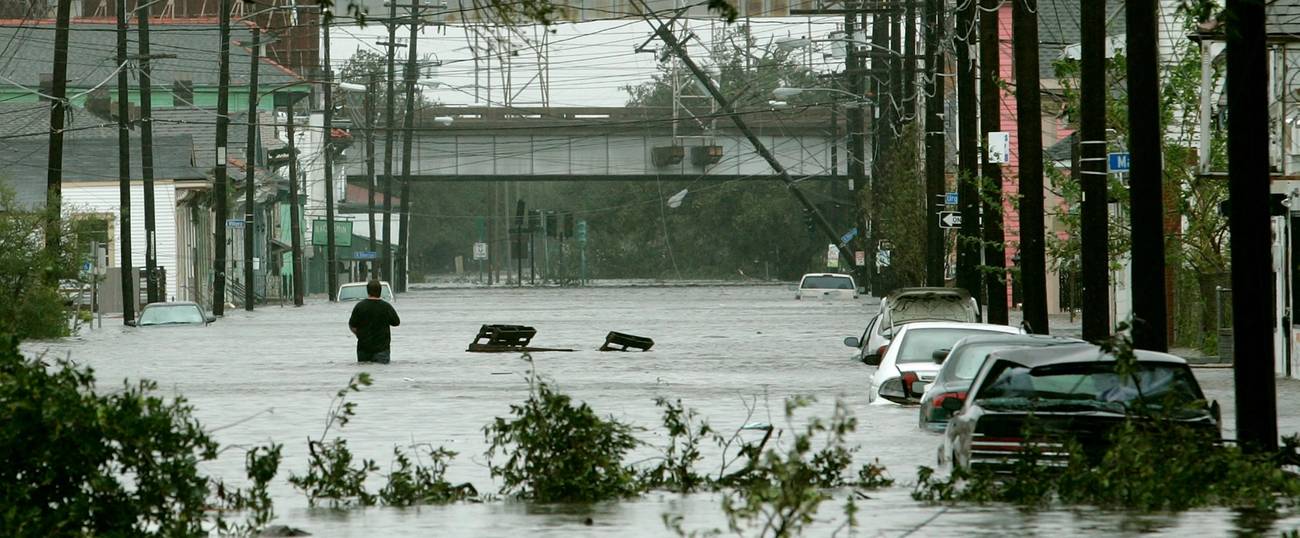Hurricane Katrina, Ten Years Later
Our inspiring and heartbreaking coverage of the aftermath of one of the most destructive natural disasters in U.S. history




Ten years ago, one of the most destructive and deadliest natural disasters in United States history ravaged the Gulf Coast, from central Florida to Texas. The neighborhoods of New Orleans, Louisiana, were overtaken with water after its levee system failed. Estimates place the death toll at at least 1,646 people. To this day New Orleans is still recovering from the effects of the hurricane, and the damage on the city has had significant political and economic effects on the rest of the country. In the aftermath of the disaster, the government response was heavily criticized, especially then-President Bush and FEMA.
Since Tablet’s inception in 2009, we’ve covered the aftermath of the hurricane in a number of articles, from pieces that explore the challenges the city of New Orleans faces in working to repair the damage, to continuing Jewish observances in the midst of a tragedy. Here is a look at some of that coverage:
After Hurricane Katrina, A Solemn Yom Kippur by Menachem Butler
Tablet contributing editor Menachem Butler writes about visiting a flooded synagogue shortly after the disaster, and the somber resilience of the Jewish community in celebrating Yom Kippur:
For the most part, our service on that Yom Kippur was no different than any other. There was praying, singing, and stories, with a healthy dose of schmoozing in the pews—and the requisite shushing, for tradition’s sake! Robert and I switched off leading services and delivering short sermons throughout the day, while Elyasaf flawlessly read all of the Torah portions and the entire Book of Jonah. In the moments before Yizkor, Robert shared the thought that “the beauty of a synagogue is just a physical manifestation of the beauty and love of the community that created it.”
After the Exodus by Rodger Kamenetz
A moving personal account of the emotion inherent to the experience of the city of New Orleans five years after the disaster. Kamenetz describes the catharsis he felt in celebrating Rosh Hashanah, a grounding experience in the wake of tragedy:
The Rosh Hashanah service was held in a packed little chapel. We sat in the anteroom on folding chairs. I couldn’t see the rabbi, but I heard the shofar. As I’d heard the soft friction of the heron wings beating, for the city was so quiet that morning, God was whispering.
Rabbi Ovadia Yoser Dies At Age 93 by Yair Rosenberg
Rosenberg’s obituary of the controversial Sephardic chief rabbi, which dwells on the contentious statements the divisive figure made over the course of his tenure:
Yosef was man of complexity and contradiction. He has become infamous for his sharp and often bigoted statements against his political opponents and other ideological foes. He blamed Hurricane Katrina on the disengagement from Gaza. He called the secular teachers in Israel’s education system “asses,” and on another occasion claimed that non-Jews exist to serve Jews. He has repeatedly labeled his political nemeses “Amalek,” in reference to the genocidal enemy of the biblical Israelites, most recently accusing Yair Lapid and Naftali Bennett of destroying Judaism. These statements form a long and disquieting litany, one that cannot be excused as mere excesses or mistakes.
Kafka on the Gulf by Rodger Kamenetz
Another piece from New Orleans resident Kamenetz. This one deals with the oil spill which occurred in the city in 2010. Kamenetz muses on the Kafkaesque nature of life in post-Katrina New Orleans:
Look at the weirdness of former FEMA Director Michael Brown suddenly popping up to give his opinion of our disaster on Fox News. Or of actor Kevin Costner showing up to offer a solution to all our problems. Or at the sudden appearances of 400 beach cleanup workers in white Tyvek and color-coded T-shirts on Grande Isle the morning President Obama arrives for his photo-op. Or at drill-baby-drill Republicans like Senator David Vitter and Governor Bobby Jindal suddenly going all environmental on us. There’s no other word for it but Kafkaesque.
Jazz Messengers by Allison Good
Good’s piece explores the pivotal and historic place jazz music plays in New Orleans. She writes about the Jewish contribution to the scene and how it has influenced and shaped the sound and style of play.
“Those guys really got it right,” Kaplan said of Treme’s creators. “They’re as close to the music and culture as anyone’s ever gotten. We are all New Orleanians, that’s who we are first. People talk about whether you’re American first or Jewish first, but here everyone has a shared experience that came from Hurricane Katrina.” The Wolf has been seen on the show, and Kaplan is involved in the production of “A Night in Treme,” a national tour featuring live performances by New Orleans artists.
After the Storm by Saul Ebein
Ebein’s piece describes the resilience of New Orleans’ sole kosher market and its history of catering for the city’s Jews before and after the flood.
Kosher Cajun had been the only kosher market for New Orleans’ small Orthodox community of about forty families. The storm gutted Beth Israel, the main Orthodox synagogue. The floodwaters had irretrievably damaged the congregation’s Torah scrolls. But as long as there was food for its members to eat, the congregation could rebound.
Brown had to get the store running again.
Jas Chana is a former intern at Tablet.